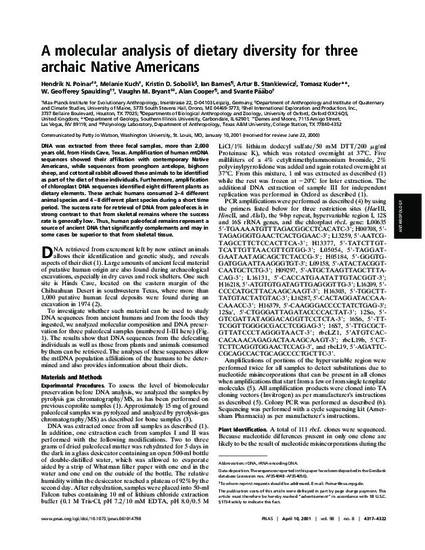
Article
A Molecular Analysis of Dietary Diversity for Three Archaic Native Americans
Proceedings of the National Academy of Sciences of the United States of America
(2001)
Abstract
DNA was extracted from three fecal samples, more than 2,000 years old, from Hinds Cave, Texas. Amplification of human mtDNA sequences showed their affiliation with contemporary Native Americans, while sequences from pronghorn antelope, bighorn sheep, and cottontail rabbit allowed these animals to be identified as part of the diet of these individuals. Furthermore, amplification of chloroplast DNA sequences identified eight different plants as dietary elements. These archaic humans consumed 2-4 different animal species and 4-8 different plant species during a short time period. The success rate for retrieval of DNA from paleofeces is in strong contrast to that from skeletal remains where the success rate is generally low. Thus, human paleofecal remains represent a source of ancient DNA that significantly complements and may in some cases be superior to that from skeletal tissue.
Disciplines
Publication Date
April 10, 2001
Citation Information
Hendrik N. Poinar, Melanie Kuch, Kristin D. Sobolik, Ian Barnes, et al.. "A Molecular Analysis of Dietary Diversity for Three Archaic Native Americans" Proceedings of the National Academy of Sciences of the United States of America Vol. 98 Iss. 8 (2001) Available at: http://works.bepress.com/kristin_sobolik/11/
